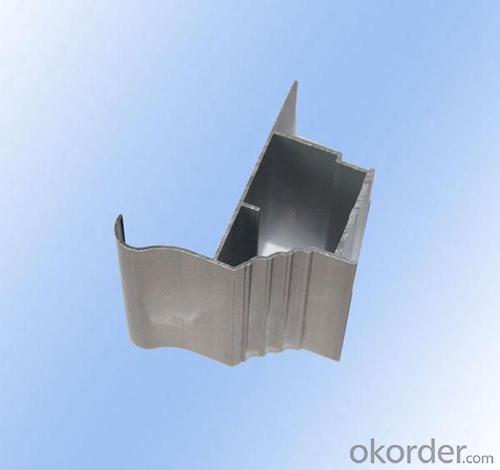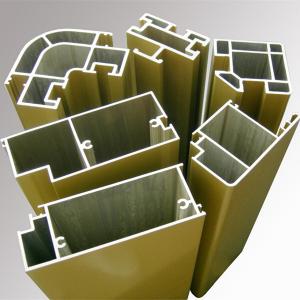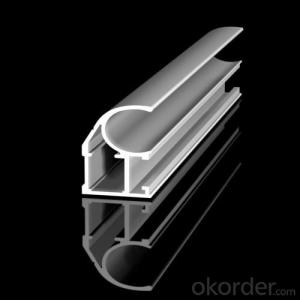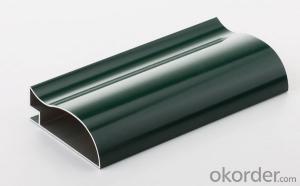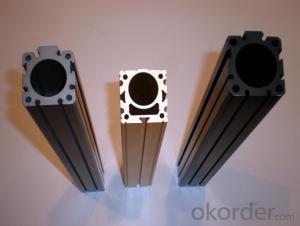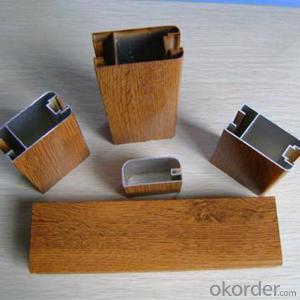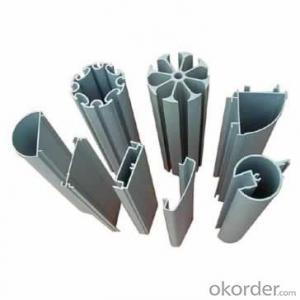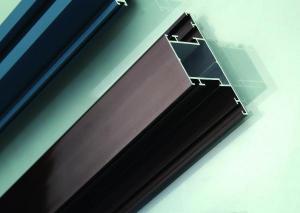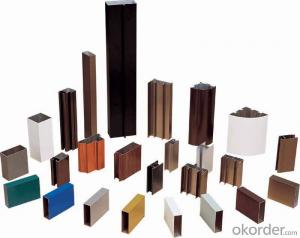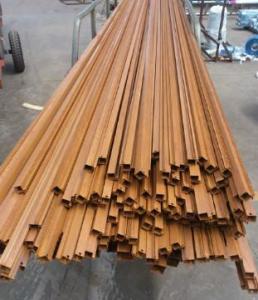Mill Finish Aluminum Led Extrusion Profiles - Made in China
- Loading Port:
- Shanghai
- Payment Terms:
- TT OR LC
- Min Order Qty:
- 5 m.t.
- Supply Capability:
- 10000 m.t./month
OKorder Service Pledge
OKorder Financial Service
You Might Also Like
Specification
1. Specification of Mill Finish Aluminum Profile Extrusion Made in China
Alloy | AA1050,AA1060, AA1070, AA1100 |
Temper: | H12, H14, H16, H18, H22, H24, H26, H32,HO, F |
Thickness: | 0.10-500mm |
Width: | 10mm- 2200mm |
Standard: | GB/T3880-2006, ASTM, ISO, EU standard |
Special Specification is available on customer’s requirement | |
2. Application of Mill Finish Aluminum Profile Extrusion Made in China
wall cladding, ceilings, bathrooms, kitchens and balconies, shutters, doors,windows…
3. Feature of Mill Finish Aluminum Profile Extrusion Made in China
Surface Quality :
Be free from Oil Stain, Dent, Inclusion, Scratches, Stain, Oxide Decoration, Breaks, Corrosion, Roll Marks, Dirt Streaks and other defect which will interfere with use,
Mochenical Property:
Chemical Composite and Mechanical Property
4. Certificate:
SGS and ROHS(if client request, paid by client), MTC(plant provided), Certificate of Origin(FORM A, FORM E, CO), Bureau Veritas and SGS (if client request, paid by client), CIQS certificate
5. Image of Mill Finish Aluminum Profile Extrusion Made in China
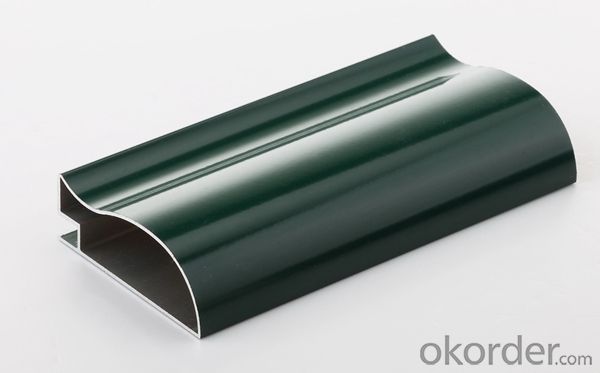
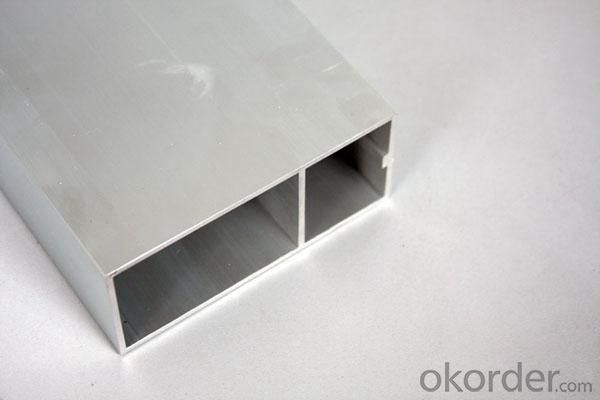
6. Package and shipping of Mill Finish Aluminum Profile Extrusion Made in China
First, plastic cloth with drying agent inside; Second, Pearl Wool; Third, wooden cases with dry agent, fumigation wooden pallets, aluminum surface could cover blue PVC film
7. FAQ
Question 1: What is your MOQ?
We accept one ton per type for an order. But the detail we could negotiate.
Question 2: What is your normal terms of payment?
We always trade with you by T/T. But we also accept the L/C as you require.
Question 3: How many kinds of the surface treatment we can choose?
You could choose different color of powder coated. Anodized of black. matte silver, nature, champagne, bronze color. Mill finished. Wooden finished and printed.etc.
Question 4: Can you supply OEM services?
We offer OEM services for 17 years.
Question 5: How many days for opening the mould?
Normally about 10 days.According to the difficulty of your drawing.
Question 6: Can i choose the package what i want?
Yes, of course. We offer various kinds of package.e.g.PE foam. Shrink film. Wrapping paper.
But we would give you professional suggestion of package.
- Q: T6 should be 140MPa, while the aluminum profile specification should be 150MPa. Should that be the standard?Code for design of glass curtain wall... And the calculation formula of bolt connection, what is the compressive strength value of aluminum profile?Prawns help you, 3Q~
- In this case, not only is the bending deformation produced by tensile stress, it is a large part of the moment and shear, in a large error.
- Q: Can aluminum profiles be used for electrical cabinets?
- Yes, aluminum profiles can be used for electrical cabinets. Aluminum is a lightweight and durable material that offers excellent corrosion resistance and electrical conductivity, making it suitable for use in electrical cabinets. Additionally, aluminum profiles can be easily customized and fabricated to meet specific design and functional requirements of electrical cabinets.
- Q: How do aluminum profiles perform in terms of thermal conductivity?
- Aluminum profiles are known for their excellent thermal conductivity. Thermal conductivity refers to the ability of a material to transfer heat. Aluminum has a high thermal conductivity value, which means it can efficiently transfer heat from one point to another. This property makes aluminum profiles highly suitable for applications that require heat dissipation or heat transfer, such as in the construction of heat sinks, radiators, or electrical components. Additionally, the high thermal conductivity of aluminum profiles allows for faster and more efficient cooling, making them ideal for applications that involve thermal management.
- Q: Is it possible to use aluminum profiles as materials for flooring?
- <p>Aluminum profiles can indeed be used for flooring materials, particularly in industrial or commercial settings. They are valued for their strength, durability, and resistance to corrosion. Aluminum profiles are often used in modular flooring systems, providing a stable and customizable base that can be easily adjusted or reconfigured. They are also appreciated for their lightweight nature, which can reduce the load on structures and facilitate installation. However, for residential applications, traditional flooring materials like wood, tile, or carpet are more common due to aesthetic and comfort considerations.</p>
- Q: Are aluminum profiles resistant to mold or mildew?
- Indeed, aluminum profiles exhibit a remarkable resistance to the growth of mold and mildew. This is due to the inherent properties of aluminum, which render it highly impervious to these unsightly invaders. In contrast to materials like wood, which are susceptible to moisture damage and consequently encourage the proliferation of mold and mildew, aluminum remains unaffected by such issues. Moreover, aluminum profiles are frequently treated with protective coatings or finishes that further bolster their resilience against the encroachment of mold and mildew. Consequently, aluminum profiles represent an ideal choice for areas that are prone to excessive humidity or moisture, such as bathrooms or kitchens, where the growth of mold and mildew is a prevalent concern.
- Q: This question asks whether aluminum profiles can be utilized for creating interior partitions and seeks reasons for their suitability.
- <p>Yes, aluminum profiles can be used for interior partitions. They are favored for several reasons: they are lightweight yet strong, offering durability and stability. Aluminum profiles are also resistant to corrosion, which makes them suitable for various environments. Their ease of installation and low maintenance requirements make them cost-effective. Additionally, they can be easily customized to fit various design needs, and their recyclability makes them an environmentally friendly choice.</p>
- Q: How do aluminum profiles perform in terms of electrical conductivity?
- Compared to metals like copper or silver, aluminum profiles exhibit relatively lower electrical conductivity. This discrepancy arises from aluminum's higher resistivity, which results in increased resistance to the flow of electric current. Nevertheless, aluminum profiles retain adequate electrical conductivity for numerous applications. They effectively facilitate the conduction of electricity, rendering them appropriate for diverse electrical and electronic devices. Moreover, if necessary, aluminum profiles can undergo specific treatments or coatings to further enhance their conductivity.
- Q: This question asks for an overview of the various types of aluminum profiles that are frequently utilized in the construction of commercial buildings.
- <p>Commonly used aluminum profiles in commercial buildings include: 1. Extruded aluminum profiles, which are versatile and used for window frames, door frames, and curtain walls. 2. Structural aluminum profiles, used for load-bearing structures and support systems. 3. Architectural aluminum profiles, designed for aesthetic and functional purposes like facades and decorative elements. 4. Industrial aluminum profiles, used in manufacturing and assembly lines. 5. Thermal break aluminum profiles, which reduce heat transfer and are used in energy-efficient buildings. 6. Anodized aluminum profiles, offering enhanced durability and corrosion resistance. These profiles are chosen based on specific project requirements, such as structural needs, design aesthetics, and environmental considerations.</p>
- Q: What are the different types of protective coatings for aluminum profiles?
- There exists a variety of protective coatings for aluminum profiles that serve to enhance their durability and lifespan, as well as add aesthetic appeal. Some common types include: 1. Anodizing: This popular and widely used coating involves an electrochemical process that generates a thin, transparent layer of aluminum oxide on the metal's surface. It provides exceptional corrosion resistance and can be customized with various dye colors. 2. Powder Coating: In this dry finishing process, an electrostatically charged powder is applied onto the aluminum surface, then heated to create a durable and protective coating. Powder coating offers excellent resistance to impact, chemicals, and corrosion, while also providing a uniform and attractive finish. 3. Paint Coating: Aluminum profiles often utilize paint coatings, particularly in applications where aesthetics are crucial. These coatings can be applied through spraying, brushing, or dipping methods, offering protection against corrosion, UV rays, and other environmental factors. They also offer a wide range of color options. 4. E-Coating: Also known as electrocoating or electrophoretic deposition, this immersion-based process involves submerging the aluminum profiles in a water-based paint solution and applying an electric current. This results in a uniform and protective coating, often used as a primer before applying other coatings. E-coating excels in corrosion resistance. 5. Clear Coating: Transparent protective layers, such as clear lacquers or clear anodizing, are frequently employed to preserve the natural appearance of aluminum profiles while shielding them against corrosion and environmental factors. Choosing the appropriate protective coating for your aluminum profiles necessitates considering specific requirements and the intended application. Factors such as durability, corrosion resistance, aesthetics, and cost should be taken into account to ensure the optimal choice for your particular needs.
- Q: Are aluminum profiles suitable for interior design applications?
- Yes, aluminum profiles are suitable for interior design applications. They are versatile, lightweight, and can be easily customized to fit various designs and purposes. Aluminum profiles offer a modern and sleek aesthetic, and they are commonly used for items such as doors, windows, partitions, furniture, and decorative elements. Additionally, aluminum is durable, corrosion-resistant, and requires minimal maintenance, making it a practical choice for interior design projects.
Send your message to us
Mill Finish Aluminum Led Extrusion Profiles - Made in China
- Loading Port:
- Shanghai
- Payment Terms:
- TT OR LC
- Min Order Qty:
- 5 m.t.
- Supply Capability:
- 10000 m.t./month
OKorder Service Pledge
OKorder Financial Service
Similar products
Hot products
Hot Searches
Related keywords


